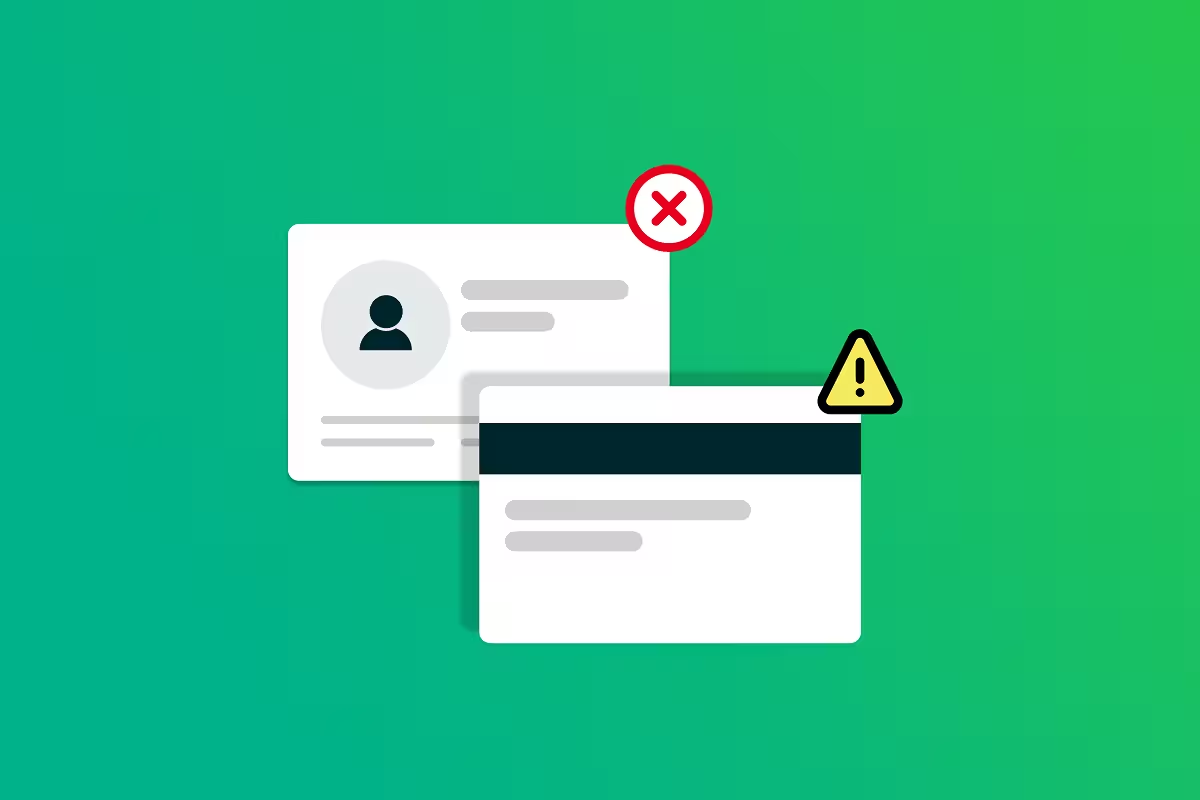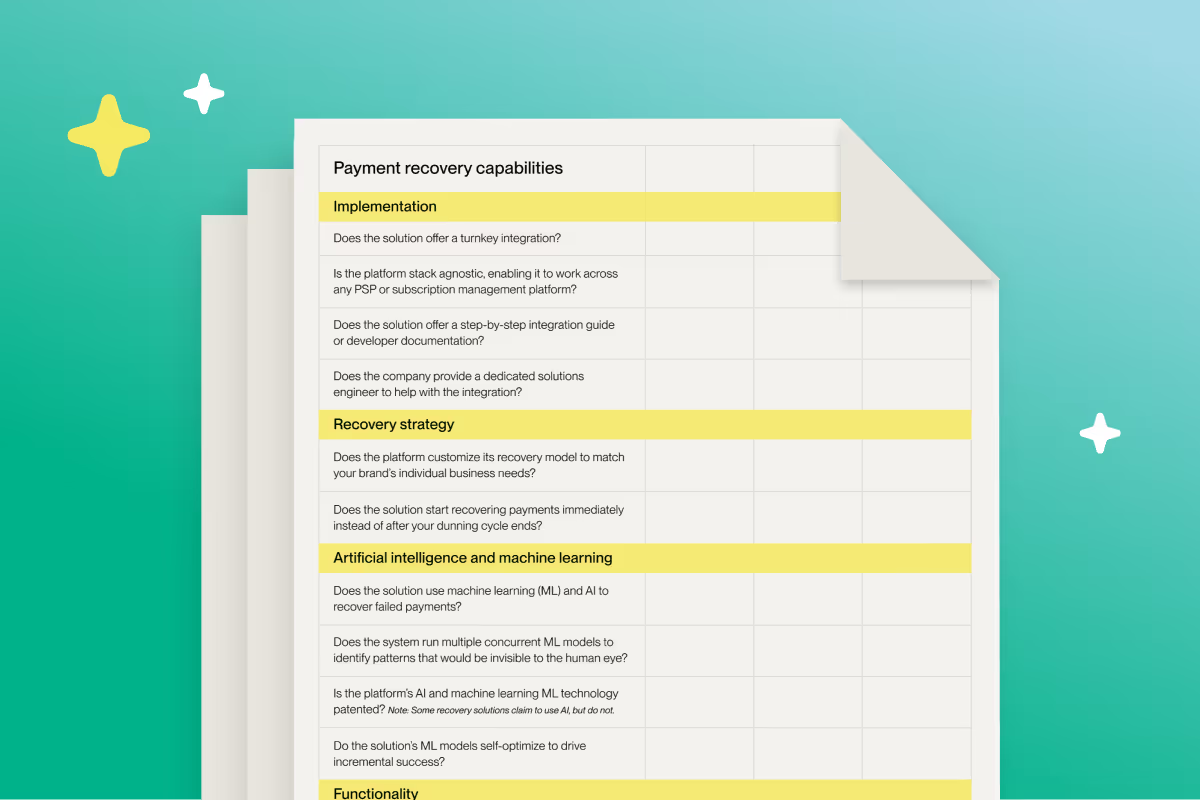
Dispute monitoring programs explained
Being placed in a dispute monitoring program is an expensive mistake that can cost you hundreds of thousands of dollars. While it's relatively rare, you must take the threat seriously.
In this guide, we’ve outlined what you need to know about dispute monitoring programs and the most prominent initiatives: the Visa Dispute Monitoring Program (VDMP) and the Mastercard Excessive Chargeback Program (ECP).
When you’re finished, you’ll know how to avoid monitoring programs and what to do if you find yourself in one.
What is a dispute monitoring program?
A dispute monitoring program tracks the number of disputes a merchant incurs in a specified timeframe. Card networks like Visa and Mastercard use this tool to protect users from fraudulent and unfair business practices. If a merchant exceeds predetermined dispute thresholds, they’re placed in a monitoring program and financially penalized until the problem is resolved.
We’ll explore dispute monitoring program fees later, but remember that payment processors like Stripe and Shopify also fine merchants for disputes ($15-$50 per instance). Worse, merchants are fined even if they win a dispute with a customer.
Why merchants are placed in a dispute monitoring program
The primary goal of dispute monitoring programs is to stop bad actors. However, there are instances when merchants might find themselves in a program by accident. There are two common scenarios:
Runaway growth
As transaction volumes increase, so do disputes. This is why businesses sometimes find themselves in a dispute monitoring program after a period of intense growth. Typically, these merchants lack the tools to manage disputes effectively.
Promotions-driven disputes
Subscription-focused businesses can see increased disputes after successful free or discounted trial campaigns. Why? Shoppers who forgot to cancel their trial or changed their minds are increasingly turning to their banks to dispute charges instead of contacting customer support.
What’s the difference between disputes and chargebacks?
The terms “dispute” and “chargeback” are often used interchangeably, but they are different. A dispute is when a customer requests a payment be reversed. A chargeback is when the issuer sides with the customer instead of the merchant and returns funds to the customer.
It’s worth noting that while Visa uses the term “dispute” and Mastercard uses the term “chargeback,” both networks are referring to the same thing: an instance when a consumer files a request to have their money returned.
Payment disputes: Everything you need to know about chargebacks
What are the biggest dispute monitoring programs?
Unsurprisingly, the biggest dispute monitoring programs are run by the two largest credit card networks, Visa (1.3 billion users) and Mastercard (1.1 billion users). Discovery and American Express, the next largest card networks, don’t operate dispute programs.
Now that you know the basics, let’s take a deeper look at Visa and Mastercard’s programs.
How does the Visa Dispute Monitoring Program work?
At the beginning of each month, Visa reviews the previous month’s processing activity and identifies companies that exceeded the card network’s thresholds for total number of disputes filed and dispute-to-sale ratio. Merchants who exceed both thresholds are entered into the program.
What are VDMP dispute thresholds and penalties?
There are two levels to Visa’s program—standard and excessive.
Merchants with 100 or more disputes and a dispute-to-sale ratio greater than 0.90% enter the monitoring program at the standard level. After four months of non-compliance, merchants are charged $50 per dispute. After 9 months of non-compliance, merchants are charged a monthly $25,000 review fee. Visa may also require merchants to pay for a third-party audit.
VDMP thresholds
Merchants with 1,000 or more disputes and a dispute-to-sales ratio greater than 1.8% are entered into the monitoring program at the excessive level. Fines begin immediately. Like with the standard level, merchants are charged $50 per dispute. After 6 months of non-compliance at this level, merchants are charged a monthly $25,000 review fee.
If a merchant remains in a program for over 12 months, they may be disqualified from accepting Visa payments. Merchants might also be required to undergo a third-party review at their own expense.
VDMP non-compliance fees
As an illustration, imagine a merchant had 500 disputes and 15,000 transactions in June, a dispute rate of 3.3%. The merchant would enter Visa’s monitoring program at the standard level.
To exit Visa’s dispute monitoring program, companies must remain below the card network’s thresholds for 3 consecutive months.
Editor’s note: Visa announced a new fraud and disputes program that will launch on April 1, 2025. The Visa Acquirer Monitoring Program (VAMP) consolidates five existing fraud and dispute programs into a single acquirer program. Learn more about VAMP here.
How does the Mastercard Excessive Chargeback Program work?
Mastercard uses two benchmarks, total chargebacks and “basis points,” to determine whether to enroll a merchant in its program. Merchants must exceed both thresholds to qualify for the program.
The concept of total chargebacks is self-explanatory, but basis points are more complicated.
Basis points are calculated by dividing the chargebacks in the current month by the total number of sales in the prior month and then multiplying by 10,000.
For example, imagine a merchant with 150 chargebacks in July and 15,000 transactions in June. The business would have 100 basis points (150 / 15,000 * 10,000).
What are ECP chargeback thresholds and penalties?
There are two levels to MasterCard’s dispute monitoring program—excessive and high excessive.
If a merchant accumulates 100 to 299 chargebacks and 150 to 299 chargeback basis points in a month, they are identified as an Excessive Chargeback Merchant (ECM). A merchant that accumulates 300 or more chargebacks and chargeback basis points in a month is recognized as a High Excessive Chargeback Merchant (HECM).
ECP thresholds
Fines for being an ECM start at $1,000 and increase to $100,000 over time. Fines for being a HECM begin at $2,000 and increase to $200,000 over time; merchants may also be charged an issuer recovery assessment fee of $5 per chargeback over 300 chargebacks.
Here’s how an issuer recovery assessment fee works: An ECM in month 4 with 350 disputes would be assessed $5,250 by Mastercard ($5,000 + (350 - 300) x $5).
ECP fees
To exit Mastercard’s program, merchants must be below the network's chargeback and basis points thresholds for 3 consecutive months.
Final thoughts
Take dispute monitoring programs seriously. Being entered into a program is a massive drain on your resources and curtails your profits. The best way to avoid dispute monitoring programs is to be proactive and implement dispute reduction strategies before chargebacks become a problem. Start by implementing a third-party solution like Dispute by Butter.
Dispute by Butter is a real-time, automated tool that combines transaction data with machine-learning-based models to determine the optimal course of action for each dispute.
MuseScore, a top education platform, used Dispute by Butter and unlocked 20% more cash flow. Read MuseScore’s case study to learn more.
7 ways to reduce chargebacks and disputes
FAQ
How do dispute monitoring programs affect my business?
Dispute monitoring programs cost you money. You must pay fines and assessment/review fees. You might also need to hire additional help to get your disputes under control. However, the most significant impact is that you might lose the ability to accept a network’s payments.
How are merchants entered into a dispute monitoring program?
Merchants are placed into a card network’s dispute monitoring program if they exceed a specific threshold of disputes within a specified timeframe. The threshold depends on what the card network has deemed excessive. You should always work to minimize disputes and chargebacks.
What happens when a merchant is placed in a dispute monitoring program?
Depending on the severity of non-compliance, you can be fined for each dispute, incur a monthly review fee, and/or be charged a monthly assessment fee. The specific type of fee is dependent on the card network’s policy.
Does successfully disputing a chargeback improve my dispute ratio?
No. Card networks care more about preventing disputes than how they’re resolved.
How do you exit a dispute monitor program?
Each program’s policy is different; however, broadly, you must reduce your chargebacks and disputes to below a predetermined number and keep them there for a specified period of time, typically 3 months.
How do you prevent disputes and chargebacks?
There is no one surefire way to prevent disputes and chargebacks. Instead, you’ll need to implement several strategies. Read Butter’s guide on how to reduce disputes and chargebacks for proven examples.



